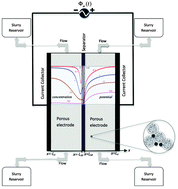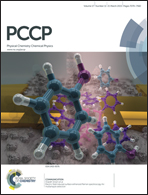Capacitive charging and desalination dynamics of a packed-bed reactor
Abstract
We study theoretically the charging and desalination dynamics of a packed-bed reactor comprising two percolating granular aggregates that form two porous electrodes. The two porous electrodes are separated with an ion-permeable, electrically insulating spacer, are confined between two long, parallel, current collecting plates, and are saturated with an electrolyte solution. The porous electrodes are ideally polarizable. The electrolyte is binary, and dilute. The electric double layers next to the pore surface are thin. We use volume-averaging (homogenization) theory for porous electrodes and the Gouy–Chapman–Stern model for the electric double layer. Both the cases of finite and infinite aggregate electric conductivities subjected to step changes in the collecting plates' potentials are considered. We determine the potential and concentration distributions and the charging time as functions of space, time, and reactor characteristics. Significantly, we find that the charging time depends only weakly on the solid matrix conductivity as long as the solid matrix conductivity is of comparable magnitude or greater than that of the electrolyte. Furthermore, there is an optimal, finite solid matrix conductivity for which the charging time is minimized.


 Please wait while we load your content...
Please wait while we load your content...